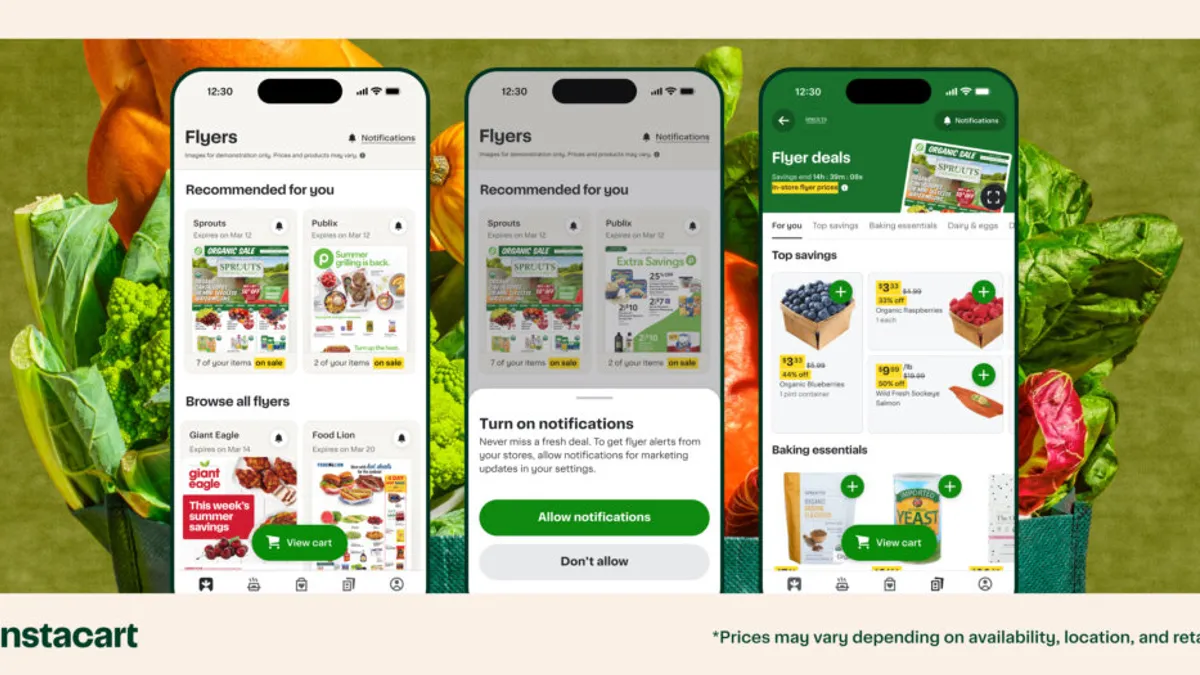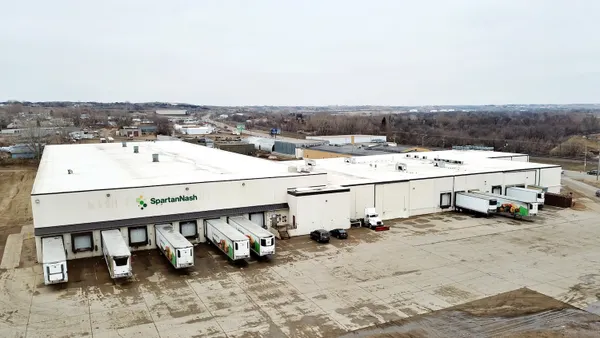Dive Brief:
- Instacart announced Wednesday it has launched new money-saving features for consumers.
- The new tools include personalized digital grocery circulars and a next-day delivery option with waived e-commerce fees for orders over $10. Instacart has also waived pickup fees on orders of $35 or more.
- Instacart also said it expanded access to more loyalty card programs and SNAP online acceptance among its retailer partners in recent months.
Dive Insight:
Instacart positioned its new options as a way to help consumers save money as the grocery technology company aims to make online grocery purchases more affordable.
The new digital flyers allow customers to browse weekly deals from numerous retailers at once to compare savings, the company said. The flyers can be personalized to show how many of a shopper’s frequently purchased items are on sale. Consumers can get notifications about when grocers add new flyers.
Meanwhile, the next-day delivery option waives the delivery fee of a $7.99 value but is not applicable to orders from convenience, club, alcohol and dollar stores.
People using Instacart can now access “hundreds” of store loyalty programs, including retailers like Albertsons, Costco, Food Lion, Kroger, Meijer, Raley’s, Schnuck Markets and Wegmans, and save an average of $8-$12 per order, the announcement noted.
Instacart said that consumers can use SNAP benefits at nearly 180 retailer banners, spanning over 30,000 stores, reaching nearly 98% of SNAP households in the U.S.
Instacart cited a LendingTree survey that found that 2-in-5 consumers expect to go into debt over back-to-school shopping, at an average cost of $793: “With extreme costs like that, it’s more important than ever to find ways to save,” Instacart Chief Product Officer Daniel Danker wrote in a blog post.
A new report from Brick Meets Click and Mercatus found that reduced e-commerce fees on membership programs by Instacart, along with Walmart and Amazon, helped delivery make gains in the e-grocery market last month. In July, delivery accounted for just over 40% of grocery e-commerce sales, trailing pickup’s roughly 42% share.














